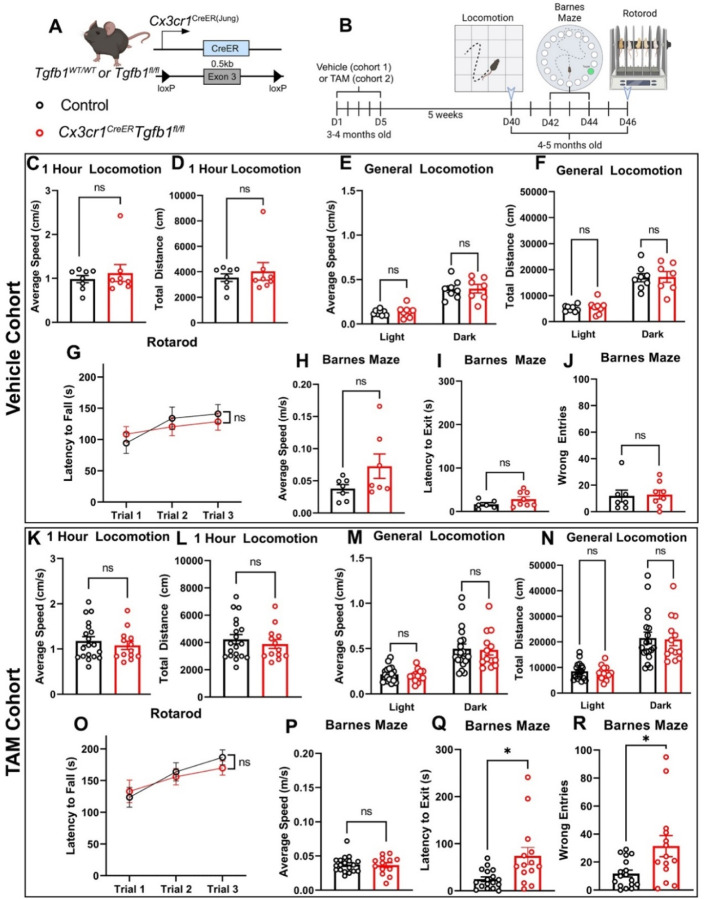Figure 8. Behavioral assessment of full dosage Veh or TAM treated Cx3cr1CreERTgfb1wt/wt or Cx3cr1CreERTgfb1fl/fl mice to evaluate general motor function, motor coordination and learning, and learning and memory.
(A) Mouse model used to induce Tgfb1 KO in microglia. (B) Experimental timeline, showing the order of behavioral measurements. (C-J) Behavioral measurements in vehicle-treated Cx3cr1CreERTgfb1wt/wt or Cx3cr1CreERTgfb1fl/fl mice showing open field test (OFT) of the first hour in locomotion chamber (C) average speed and (D) total distance traveled. (E,F) average speed and total distance during the light and dark cycles in a 23-hour period. G) Accelerated rotarod learning test. (H-J) Barnes maze test showing (H) average speed during testing (I) latency to locating the target hole and (J) number of error trails before locating the target hole. (n=8 for each group). (K-R) Behavioral measurements from TAM-treated control and iKO mice showing open field test (OFT) of the first hour in locomotion chamber (K) average speed and (L) total distance traveled. (M, N) average speed and total distance during the light and dark cycles in a 23-hour period. (O) Accelerated rotarod learning test. (P-R) Barnes maze test showing (P) average speed during testing (Q) latency to locating the target hole and (R) number of error trails before locating the target hole. (control n=19, iKO n=13) (ns=not significant, * p<0.05, Student’s t-test)

